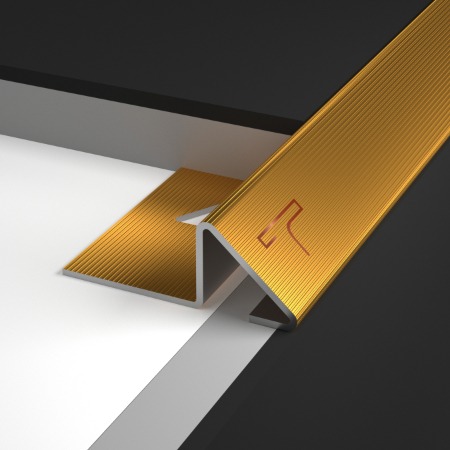In the realm of interior design, the devil is in the details, and tile edging profiles are no exception. Whether you’re renovating your kitchen backsplash, upgrading your bathroom, or giving your floors a facelift, understanding stainless steel Tile Edging Profiles is crucial for achieving a polished, professional look. In this comprehensive guide, we’ll delve into the world of stainless steel tile edging, exploring its types, installation methods, and the myriad benefits it offers for both aesthetics and durability.
Types and Categories
- Bullnose Profiles: These rounded-edge profiles provide a smooth transition between tiles, offering a sleek and modern finish.
- L-Shaped Profiles: Ideal for protecting tile edges on countertops and stairs, L-shaped profiles offer both functionality and aesthetic appeal.
- Straight Edge Profiles: Simple yet effective, straight edge profiles provide a clean, minimalist look, perfect for contemporary designs.
- Decorative Profiles: From intricate designs to textured finishes, decorative profiles add a touch of elegance and sophistication to any tile installation.
- Transition Profiles: Used to bridge the gap between different flooring types, transition profiles ensure a seamless transition while protecting edges from damage.
Symptoms and Signs
- Uneven tile edges
- Chipped or cracked tiles
- Visible grout lines
- Lack of cohesion between tile surfaces
Causes and Risk Factors
- Poor installation techniques
- Heavy foot traffic
- Moisture exposure
- Wear and tear over time
Diagnosis and Tests
- Visual Inspection: Assessing the condition of tile edges and grout lines.
- Measurement: Ensuring precise dimensions for selecting the appropriate edging profile.
- Compatibility Check: Verifying compatibility with tile material and thickness.
Treatment Options
- Stainless Steel Trim: Opting for stainless steel edging profiles offers superior durability and resistance to corrosion, ensuring long-term performance.
- Proper Installation: Following manufacturer guidelines and using quality adhesives and sealants for secure installation.
- Regular Maintenance: Periodically cleaning and inspecting tile edging profiles to prevent buildup of dirt and grime.
Preventive Measures
- Invest in Quality Materials: Choosing high-quality stainless steel profiles from reputable manufacturers ensures longevity and performance.
- Professional Installation: Hiring experienced professionals for installation minimizes the risk of errors and ensures a flawless finish.
- Routine Maintenance: Implementing a regular cleaning and maintenance schedule helps prolong the lifespan of tile edging profiles.
Personal Stories or Case Studies
Case Study 1: Sarah’s Kitchen Renovation
Sarah, a homeowner with a passion for cooking, decided to renovate her outdated kitchen. By incorporating stainless steel tile edging profiles, she not only achieved a modern look but also added a durable and functional element to her space. The sleek finish of the profiles complemented her stainless steel appliances, creating a cohesive and visually appealing design.
Expert Insights
According to interior design expert, Emily Collins, “Stainless steel tile edging profiles offer a versatile solution for finishing tile installations. Their durability and resistance to corrosion make them an ideal choice for high-traffic areas such as kitchens and bathrooms.”
Conclusion
Mastering stainless steel tile edging profiles is essential for achieving professional-looking tile installations that stand the test of time. By understanding the different types, installation methods, and benefits of stainless steel profiles, homeowners and designers can elevate their interior spaces with confidence.

